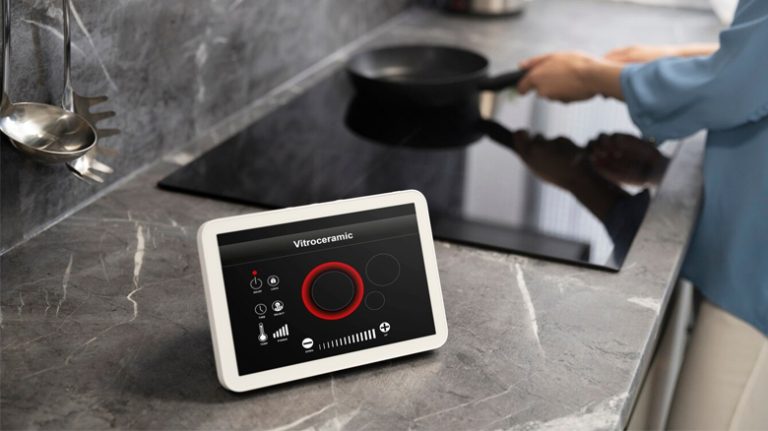Are Air Fryers Toxic? Unpacking the Truth Behind the Hype
Air fryers have become a kitchen sensation, lauded for their ability to deliver crispy, delicious meals with minimal oil. But amid their soaring popularity, a pressing question lingers: Are air fryers toxic? For health-conscious cooks and curious foodies alike, concerns about safety, harmful chemicals, and potential health risks have sparked heated debates. From non-stick coatings to high-heat cooking compounds, rumors swirl about whether these trendy appliances are secretly sabotaging your well-being. In this deep dive, we’ll separate fact from fiction, explore the science, and arm you with practical tips to use air fryers safely—because you deserve crispy fries without the worry.
The Air Fryer Craze: Why the Toxicity Question Matters
Air fryers promise a healthier twist on fried foods, using hot air circulation to mimic the crispy texture of deep frying without drowning your meal in oil. This convection cooking method slashes fat and calorie content, making it a go-to for weight watchers and heart-health advocates. But as their popularity skyrockets—think millions of households worldwide—some skeptics wonder if there’s a catch. Could the materials in air fryers, like non-stick coatings, or the cooking process itself release toxins into your food? Let’s break it down step by step, starting with the biggest culprit in the toxicity conversation: non-stick coatings.
Non-Stick Coatings: Teflon, PFAS, and the Toxic Fume Debate
Most air fryers come equipped with a non-stick lining—often polytetrafluoroethylene (PTFE), commonly known as Teflon—to make cooking and cleanup a breeze. This is where the toxicity concerns kick in. Historically, Teflon was made with perfluorooctanoic acid (PFOA), a chemical linked to health issues like kidney disease, liver damage, and even cancer. The good news? Since 2013, PFOA has been phased out of Teflon production, meaning modern air fryers with PTFE coatings are PFOA-free.
But the story doesn’t end there. PTFE itself is safe under normal cooking conditions—air fryers typically max out at 400-450°F (204-232°C). However, if overheated beyond 500°F (260°C), PTFE can degrade and release fumes containing per- and polyfluoroalkyl substances (PFAS). These “forever chemicals” are persistent in the environment and have been associated with health risks like increased cholesterol, reproductive issues, and a potential cancer link in high exposure cases. Overheating is rare with air fryers, though, as most models don’t even reach that threshold. Still, a scratched or damaged coating could theoretically increase the risk of chemical leaching, especially if you’re using metal utensils that chip away at the surface.
So, are air fryers toxic because of non-stick coatings? Not inherently. When used correctly—within recommended temperatures and with proper care—PTFE-lined air fryers pose minimal risk. For the ultra-cautious, ceramic-coated or stainless steel air fryers offer non-stick alternatives without PFAS concerns.
Acrylamide and High-Heat Cooking: A Carcinogen Concern?
Beyond the appliance itself, the cooking process raises another question: Does air frying produce toxic compounds? Enter acrylamide, a chemical formed when starchy foods like potatoes or bread are cooked at high temperatures (above 248°F or 120°C). Classified as a “probable human carcinogen” by the International Agency for Research on Cancer, acrylamide has fueled fears about air fryer safety.
Here’s the reality: acrylamide isn’t unique to air fryers—it forms in any high-heat cooking method, from deep frying to baking. The good news? Studies show air frying actually reduces acrylamide levels compared to deep frying—by up to 90% in some cases. Why? Less oil and shorter cooking times limit the chemical reaction between sugars and amino acids that creates acrylamide. To minimize exposure further, avoid overcooking (think golden, not charred) and opt for lower temperatures when possible. So, while acrylamide is a valid concern, air fryers aren’t the villain—they’re often the safer bet.
Other Toxins: BPA, Heavy Metals, and Manufacturing Myths
Beyond PTFE and acrylamide, whispers about bisphenol A (BPA) and heavy metals in air fryer components add to the toxicity buzz. BPA, a hormone-disrupting chemical found in some plastics, could theoretically leach into food if present in an air fryer’s body or basket. However, most reputable brands now advertise BPA-free materials, especially in food-contact zones. Check product specs to confirm—peace of mind is worth it.
As for heavy metals, claims about aluminum or wire coatings releasing toxins lack solid evidence. High-quality air fryers from trusted manufacturers undergo rigorous safety testing to meet food-grade standards. Still, if you’re wary, stick to stainless steel models, which sidestep plastic and non-stick worries altogether.
Air Fryer Safety Recalls: A Rare but Real Risk
Physical safety matters too. In recent years, a handful of air fryer recalls—like the 2023 Cosori recall of 2 million units due to faulty wiring—highlighted risks of overheating, melting, or even fires. These incidents, while alarming, are outliers tied to manufacturing defects, not inherent toxicity. They underscore the importance of choosing well-reviewed brands and following usage guidelines (e.g., don’t overfill the basket). Toxicity aside, a poorly made air fryer can still pose practical hazards—another reason to shop smart.
The Health Upside: Why Air Fryers Shine
Let’s flip the script: air fryers aren’t just “not toxic”—they’re a health upgrade. Compared to deep frying, they slash oil use by 70-80%, cutting saturated fats and calories linked to heart disease, obesity, and diabetes. They also reduce exposure to harmful compounds like polycyclic aromatic hydrocarbons (PAHs) and heterocyclic amines (HCAs), which form in oil-drenched, high-heat cooking. For nutrient retention, air frying’s quick convection heat can preserve vitamins like C and polyphenols better than boiling or prolonged frying. The takeaway? When used right, air fryers aren’t a health hazard—they’re a harm-reduction tool.
How to Use Your Air Fryer Safely (and Toxin-Free)
Worried about toxicity? These practical tips ensure your air fryer stays safe and your food stays wholesome:
- Choose Wisely: Opt for PFOA-free, BPA-free models. Ceramic or stainless steel air fryers dodge non-stick concerns entirely.
- Avoid Overheating: Stick to recommended temps (usually below 450°F) and never preheat an empty fryer too long.
- Protect the Coating: Use silicone or wooden utensils to prevent scratches; skip metal tools that could damage non-stick surfaces.
- Clean Regularly: Prevent residue buildup that could burn and release odors or fumes. A damp cloth or sponge works—avoid abrasive scrubbers.
- Cook Smart: Don’t char food—aim for golden hues to cut acrylamide. Pair starchy foods with herbs like parsley to offset oxidation.
- Ventilate: Use your air fryer in a well-ventilated kitchen to disperse any minor fumes from cooking.
Busting Myths: What TikTok Got Wrong
Social media, especially TikTok, has fueled air fryer panic with claims of “toxic fumes” and “cancer-causing appliances.” Much of this stems from outdated info (like pre-2013 PFOA fears) or misapplied science (acrylamide isn’t air fryer-specific). Experts agree: when used as intended, air fryers don’t emit harmful radiation or leach toxins into food. The real risk? Misinformation clouding a perfectly safe cooking method.
The Verdict: Are Air Fryers Toxic or Not?
So, are air fryers toxic? The evidence says no—not when you pick a quality model and use it correctly. Non-stick coatings like PTFE are safe below their breakdown temp, and modern air fryers ditch PFOA entirely. Acrylamide risks are lower than with deep frying, and BPA or heavy metal fears are largely unfounded in reputable brands. Add in the health perks—less fat, fewer calories, reduced carcinogens—and air fryers emerge as a smart, safe choice for crispy goodness.
Still skeptical? Go for a ceramic or stainless steel air fryer and cook with confidence. Either way, there’s no need to ditch your appliance over toxicity myths. Enjoy your wings, fries, and veggies—your air fryer’s got your back, not your health at stake.
Bonus: Picking the Safest Air Fryer for Your Kitchen
Shopping for an air fryer? Look for these buzzwords: PFOA-free, PFAS-free, BPA-free, ceramic-coated, or stainless steel. Brands like Ninja, Cosori (post-recall), and Instant Pot offer models with safety-first designs. Check reviews, verify materials, and prioritize durability—your peace of mind (and perfect fries) are worth it.
There you have it: the full scoop on air fryer toxicity, served straight up with no fluff. Now, go air fry something delicious—and safe.



